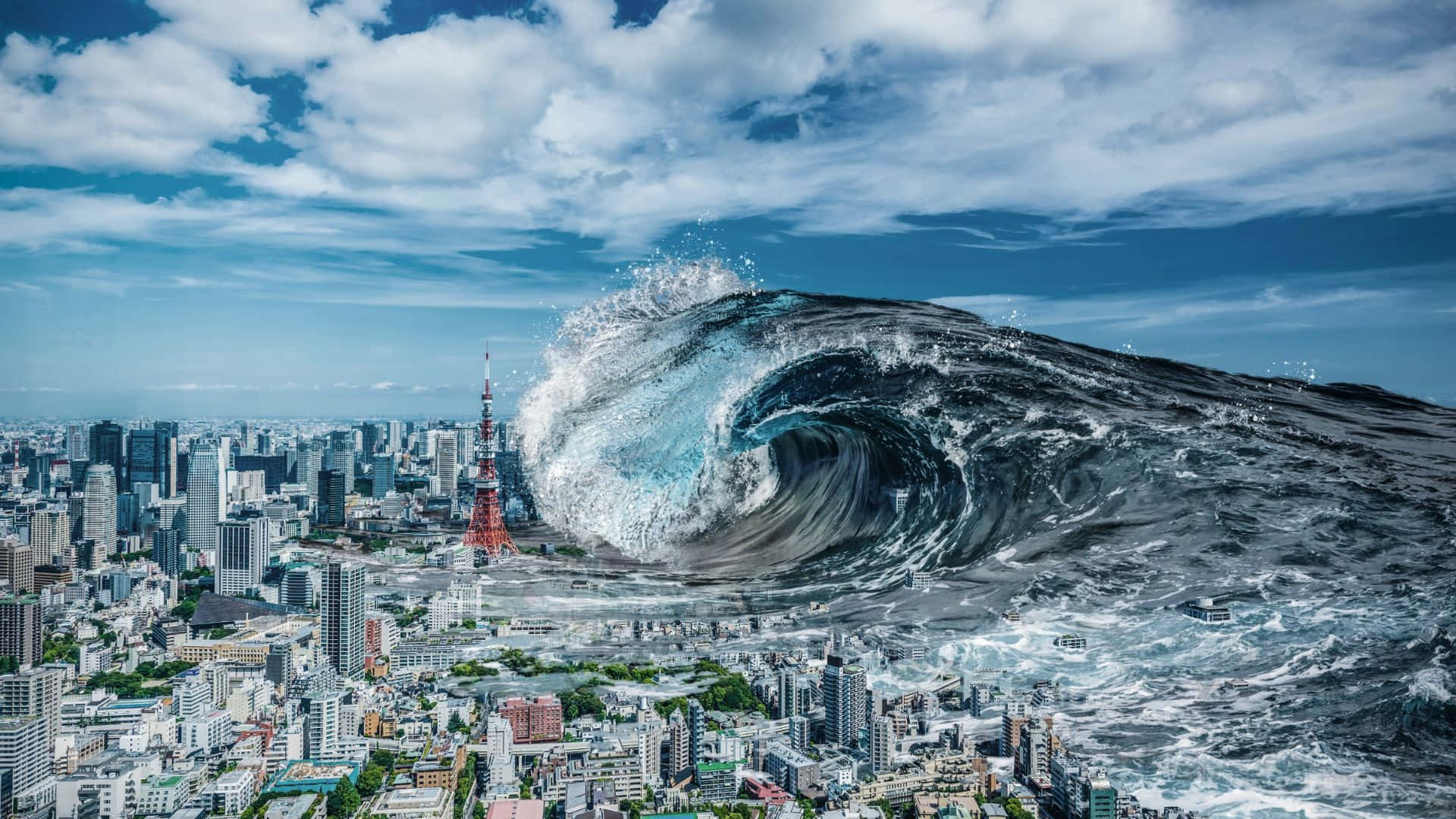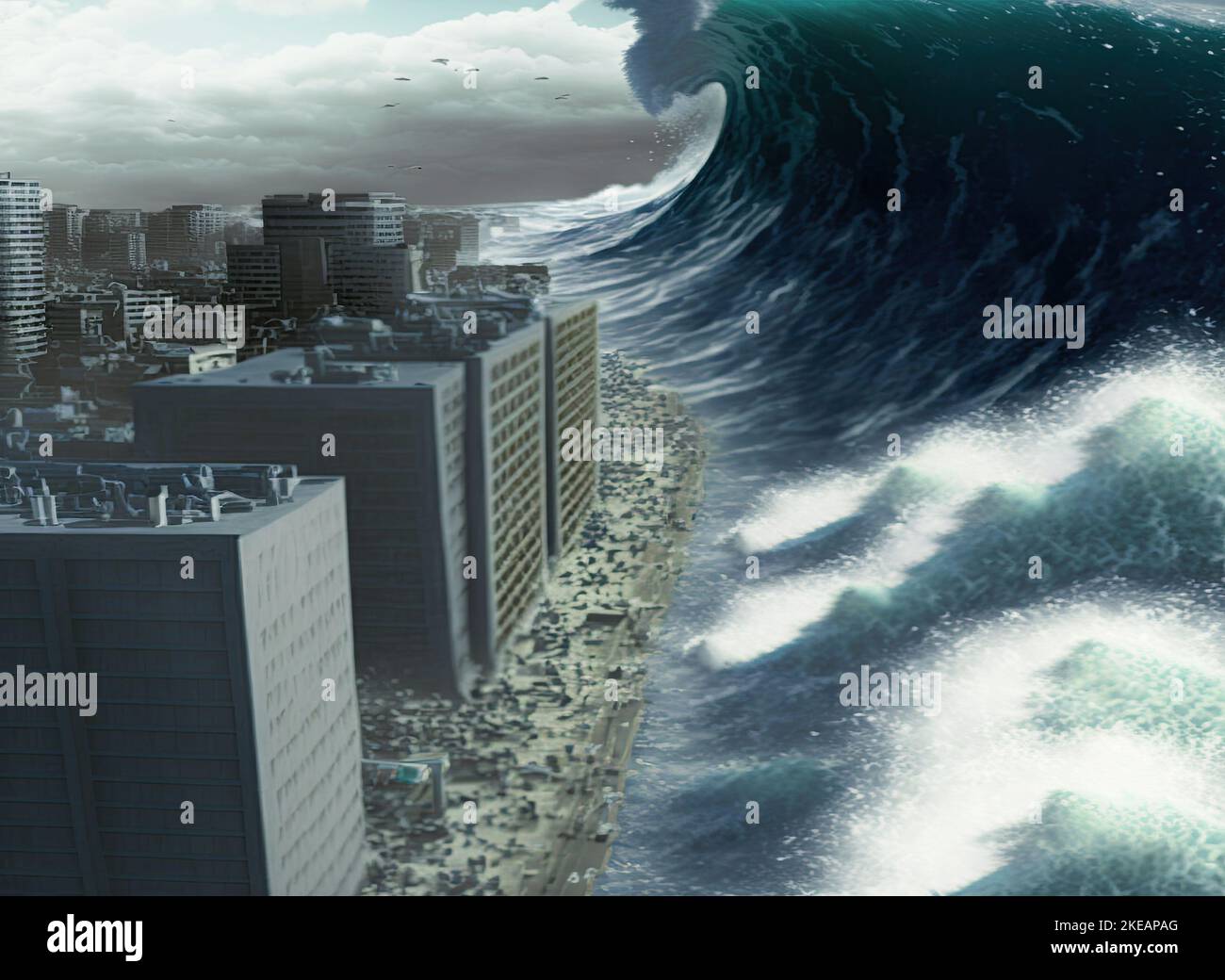Neat Tips About Is There Another Tsunami Coming

Riding the Wave of Worry
1. Understanding Tsunami Risk
Okay, let's address the elephant in the room, or rather, the giant wave in the ocean: "Is there another tsunami coming?" It's a question that understandably pops into people's minds, especially after witnessing the devastating effects of past tsunamis. The short, somewhat unsatisfying answer is: potentially, yes. But before you start packing your go-bag, let's unpack that a bit.
Tsunamis are typically triggered by underwater earthquakes, volcanic eruptions, or even landslides. The earth's crust is a bit like a giant jigsaw puzzle, and when those pieces shift suddenly, it can displace a colossal amount of water, sending waves radiating outwards. Because these natural events are, well, natural, and often unpredictable, pinpointing exactly when and where the next tsunami will strike is impossible. We can't exactly ask Mother Nature for a schedule, can we?
However, that doesn't mean we're completely in the dark. Scientists work tirelessly using sophisticated monitoring systems and historical data to assess tsunami risk in different regions. These systems keep a watchful eye on seismic activity, detect changes in sea levels, and model potential tsunami scenarios. It's like having a very diligent, albeit slightly stressed, oceanographer glued to a seismograph.
So, while we can't predict the future with absolute certainty, the good news is that early warning systems have significantly improved over the years. These systems provide valuable time for people to evacuate coastal areas, potentially saving countless lives. Think of it as a very loud, very important alarm clock for the coast.

Decoding the Danger
2. Assessing Vulnerability
Alright, let's dig a little deeper. What exactly makes one region more susceptible to tsunamis than another? Several factors play a crucial role in determining the level of risk. One of the most significant is, unsurprisingly, the location. Areas near active seismic zones, like the Pacific Ring of Fire, are naturally more prone to underwater earthquakes and, therefore, tsunamis. It's a bit like living next to a particularly enthusiastic drummer — you're bound to hear some noise.
The shape of the coastline also matters. Shallow coastal areas and bays can amplify the effects of a tsunami, causing the wave to grow taller and more destructive as it approaches the shore. Think of it like a funnel concentrating the energy of the wave. The steeper the slope on the ocean floor, the more the wave is likely to grow as it nears the shore.
Population density in coastal regions is another critical factor. A densely populated area is inherently more vulnerable to the impacts of a tsunami, as there are more people at risk. Effective evacuation plans and infrastructure are vital to mitigate the damage in such areas. Having a well-rehearsed escape plan is like having a secret weapon against disaster.
Finally, climate change is increasingly becoming a concern. Rising sea levels can exacerbate the effects of tsunamis, making coastal communities even more vulnerable. It's like adding fuel to the fire, so to speak. The rising sea levels mean the tsunami wave has a higher starting point, leading to more flooding and inundation.

Tsunami Alert Is Florida At Risk From Tsunamis?
Staying Safe
3. Preparedness is Key
Okay, so we know tsunamis are a possibility. What can we actually do to prepare? Well, being informed is the first and arguably most important step. Understanding the risks in your area and knowing the warning signs can make all the difference. Familiarize yourself with local evacuation routes and designated safe zones. Knowledge is power, especially when it comes to natural disasters.
Creating a family emergency plan is also essential. This plan should include a meeting point in case you're separated, a communication strategy, and a well-stocked emergency kit. This kit should contain essentials like water, food, first-aid supplies, a flashlight, and a portable radio. Think of it as your survival starter pack.
If you live in a coastal area, consider elevating your home or constructing a tsunami-resistant structure. These measures can significantly reduce the damage caused by a tsunami. Its like building a fortress against the waves.
Most importantly, heed tsunami warnings. When a warning is issued, don't hesitate to evacuate to higher ground. Time is of the essence, and delaying could be a fatal mistake. Treat it like a fire alarm — get out and don't look back!

The Fury Of Nature Hit Italy! Huge Waves Like Tsunami And Floods In
Tsunami Warning Systems
4. Early Detection and Response
Ever wondered how we know when a tsunami might be on its way? The answer lies in sophisticated tsunami warning systems. These systems utilize a network of sensors, buoys, and communication technologies to detect and monitor potential tsunamigenic events. They're like the watchful sentinels of the sea.
Seismographs detect underwater earthquakes, and if an earthquake is large enough and of the appropriate type, a tsunami watch is issued. Deep-ocean buoys, equipped with pressure sensors, detect changes in sea level caused by passing tsunami waves. This information is then relayed to warning centers, where experts analyze the data and issue alerts if a tsunami is confirmed. It's a high-tech game of detecting ripples in the ocean.
Effective communication is crucial in disseminating tsunami warnings to the public. Warning centers use a variety of channels, including television, radio, internet, and mobile devices, to reach people in affected areas. Sirens and public address systems are also used in some communities. The goal is to get the word out quickly and efficiently.
International collaboration is also vital in tsunami warning systems. Countries share data and expertise to improve detection and response capabilities worldwide. It's a global effort to protect coastal communities from the devastating effects of tsunamis. The Pacific Tsunami Warning Center (PTWC) and the Indian Ocean Tsunami Warning and Mitigation System (IOTWMS) are two key players in this international network.

The Human Cost
5. Lessons from History
To truly understand the potential impact of tsunamis, it's important to remember the devastating events of the past. The 2004 Indian Ocean tsunami, for example, claimed the lives of over 230,000 people in 14 countries. It was a stark reminder of the immense power of these natural disasters.
The 2011 Tohoku earthquake and tsunami in Japan caused widespread destruction and triggered the Fukushima nuclear disaster. The event highlighted the importance of robust infrastructure and effective emergency response plans. These disasters can be hard to think about, but learning from them can save lives in the future.
Studying past tsunamis provides valuable insights into their behavior and impact. Scientists analyze historical data to improve tsunami models and refine warning systems. It's like learning from past mistakes to build a better future.
Remembering the victims of past tsunamis and honoring their memory is also important. It's a way of acknowledging the human cost of these disasters and reaffirming our commitment to protecting coastal communities. By learning from these tragedies, we can better prepare for and mitigate the impact of future tsunamis.

Frequently Asked Questions (FAQs)
6. Your Tsunami Questions Answered
Q: Can scientists predict exactly when a tsunami will happen?A: Unfortunately, no. While we can monitor seismic activity and assess risk, predicting the exact timing of an earthquake (and therefore a tsunami) remains beyond our capabilities. It's more about probability than prophecy.
Q: What should I do if I'm at the beach and feel an earthquake?A: Head for higher ground immediately! Don't wait for an official warning. If you're close to the coast and the ground shakes, a tsunami could be on its way. Time is of the essence, so act quickly.
Q: Where can I find more information about tsunami preparedness?A: Check with your local emergency management agency or the National Oceanic and Atmospheric Administration (NOAA) for resources and information on tsunami preparedness in your area. They often have guides, maps, and workshops available.